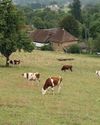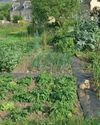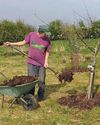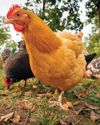
When you arrive at any vineyard in the UK or anywhere in the world for that matter there are certain things that will be the same. There will be soil, there will be posts and trellis and there will of course be vines. These points will differ in the detail but they are key elements of any vineyard, however there are so many unique points at Warden Abbey Vineyard, it is difficult to know where to begin.
Perhaps it might be best to start with Henry VIII. According to Margaret Roberts, a member of the Friends of Warden Abbey who is also the historian for the site “it was on 4 December 1537 that the Dissolution of the Monasteries” arrived in this small part of Bedfordshire and the occupation of this site that had begun in 1135 ceased. The Abbey was of the Cistercian Order and in her booklet titled “Warden Abbey the Monastic Landscape,” Margaret writes: “Warden was one of six Cistercian abbeys in Britain known to have had a vineyard, with about 37 acres under vine it was by far the largest.” It is fascinating to learn that the current area where the vines are planted had been used in late middle ages for industrial purposes. In the soil lay hidden many fragments of tiles, some with colours that are extremely well preserved. Even an old stone masons chisel or wedge has been unearthed. Whilst we are standing in the vineyard Margaret points out an area of 3.5 acres adjacent to the current vineyard which until recently had a disputed heritage. Margaret explained that she has recently been able to prove that this area was part of the medieval monastic vineyard.
This story is from the September 2023 edition of The Country Smallholder.
Start your 7-day Magzter GOLD free trial to access thousands of curated premium stories, and 9,000+ magazines and newspapers.
Already a subscriber ? Sign In
This story is from the September 2023 edition of The Country Smallholder.
Start your 7-day Magzter GOLD free trial to access thousands of curated premium stories, and 9,000+ magazines and newspapers.
Already a subscriber? Sign In

How to Buy a Smallholding in France- Long-time smallholder Lorraine Turnbull looks at the practicalities of moving to rural France
Aspiring smallholders are continually thwarted by the prices of smallholdings and property with land located within the UK. Even the humblest croft in Scotland comes with a substantial price tag and conditions which would make even an adventurous wannabee consider carefully. But all is not lost. For those willing to take the adventure of a lifetime, there is always Europe, and one of the most popular places is France.

Meet the Bournemouth goats and their supporters
These capricious animals are hard workers preserving the natural habitat

Still warm enough to sit outside with a Pizza
Henrietta Balcon uses fresh figs to create an unusual dish at Harvest time

Goodbye to the birds of spring and summer
If you look and listen you might be able to see them preparing to leave says The RSPB

Get ready for the colder weather in the warmth of late summer
Claire Waring advises on doing the best to make sure your colonies survive until next spring

Preparing the Veg Patch for Winter
Lee Senior says, a well-run plot can excitingly continue to produce good quality, tasty, fresh food for much of winter

Time to prepare to plant your orchard
Wade Muggleton, smallholder and author of The Orchard Book, shares his practical experience so you can create your own fruit collection

Choosing feed for the autumn
As autumn approaches, Joanna Palmer, nutritionist at the Smallholder Range, offers advice on choosing the right feed to support your adult birds through their annual moult and ensure your young birds grow and finish well at this time of the year.

Vet advice from an experienced poultry vet
Reflecting on how much the humble hen has helped people world wide plus advice on stopping the scourge of red mite

Give your hens some support
Paul Donovan looks at the right and wrong ways of handling birds